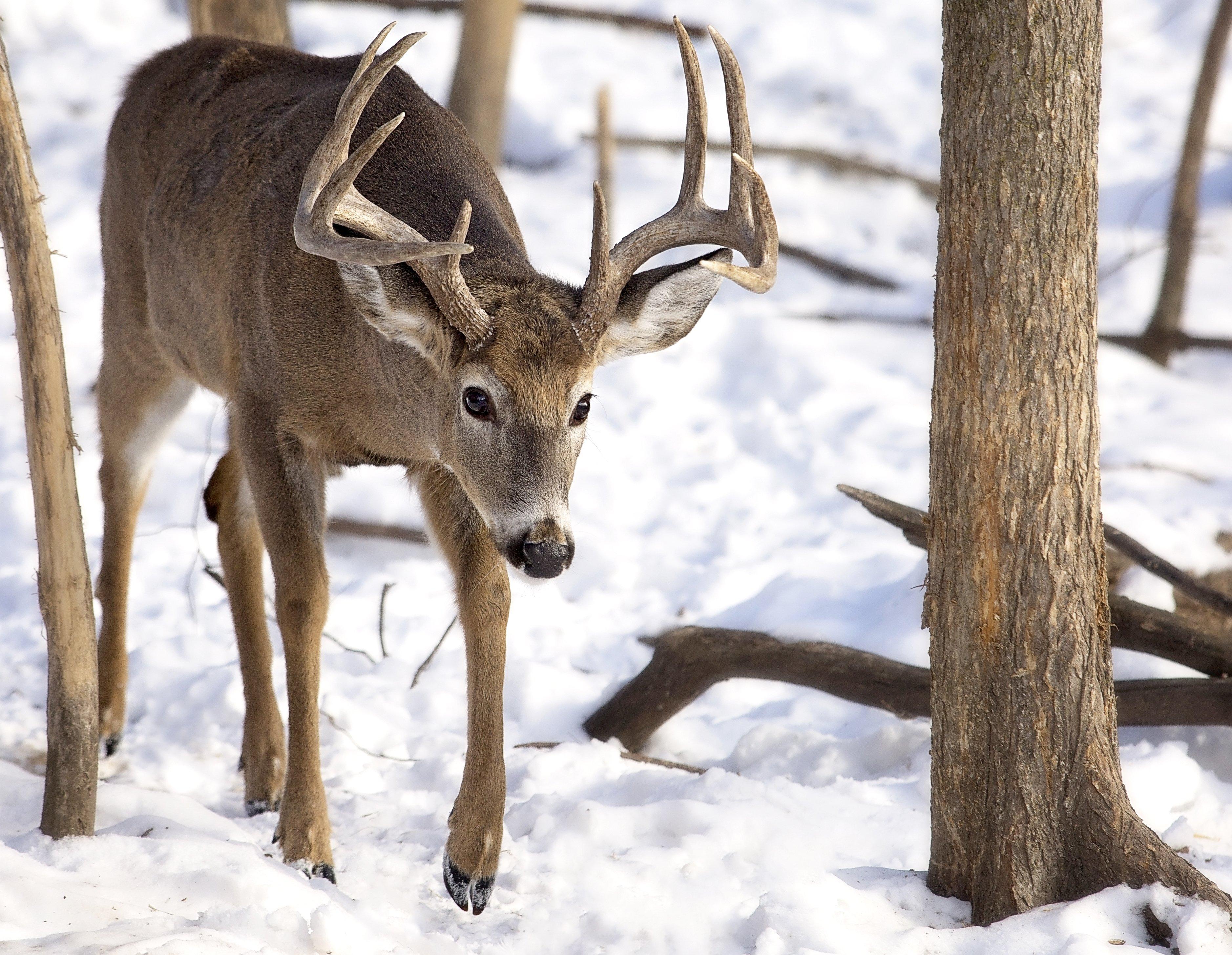800,000
Est. Whitetail Population
300,000
No. Licenses Sold Annually
$38 and up
Resident hunting license and deer permit
$358.25 and up
A nonresident hunting license is $57.75. An archery deer permit is $411. A firearms deer permit is $300.50. There are several other permits available that vary in price.
Non-resident hunting license and deer permit
204 4/8"
Taken by Melvin J. Johnson in Peoria County in 1965 and ranks 6th overall.
Record B&C Typical Stat
871
Total B&C Typical Entries
327 7/8"
Taken by Luke Brewster in Edgar County in 2018 and ranks 3rd overall.
Record B&C Non-Typical Stat
735
Record B&C Non-Typical Entries

Check out the latest info for Illinois. Image by Critterbiz
Season Dates (2023):
Archery season spans Oct. 1 to Jan. 14, with closed days at certain times in some areas. Firearms season is Nov. 17 through 19 and Nov. 30 through Dec. 3. Youth firearm season is generally in early October. Other season dates apply. Check the Illinois DNR website to CONFIRM SEASON DATES.
Grade: B
Looking solely at records, you’d have to give Illinois top honors. That isn’t the only factor, though. Tags are expensive. Epizootic hemorrhagic disease keeps coming and affected some areas in 2016, 2017, 2018, and 2019. Chronic wasting disease continues to be a concern. And finding a place to hunt is no easy task. Fortunately, nonresident tags are available over-the-counter now. But as with other top destinations, the secret of Illinois' glory has long since become common knowledge. People have flocked here for the past 20 to 25 years, and that isn’t changing soon.
“General statewide population trends are stable,” said Peter Schlichting, deer project manager for the Illinois Department of Natural Resources. “We manage deer at the county scale, and we are working to reduce the population in some areas and increase it in others. It’s hard to predict at this point, but with good rainfall this spring, we are expecting an average season.”
Interestingly, the DNR also makes it clear it doesn't manage for older bucks.
“The Illinois DNR does not manage for trophy deer,” Schlichting said. “We leave that scale of management to individual landowners. With proper habitat management, all areas in Illinois have the potential to grow trophy-class deer.”
Overall, there is a lot of good deer hunting in Illinois. You might have to pay a little more for it. Plus, if you can find access to private land, chances are good it’ll be a honey hole. The Illinois DNR does a phenomenal job managing its herd. HARVEST REPORTS paint this picture and can even help plan a good hunt.
And don’t forget to appropriately check in your deer. “All deer harvested during muzzleloader, youth, archery, late-winter antlerless-only, special CWD season and during firearm season in counties without CWD surveillance must be registered by 10 p.m. on the same calendar day the deer was harvested by calling the toll-free telephone check-in system at (866) 452-4325 (866-ILCHECK) or by accessing the online check-in system at www.exploremoreil.com/wildlife/harvest,” Schlichting said. “Successful firearm season hunters in CWD surveillance counties must take their deer either whole or field-dressed to a designated firearm deer check station on the same day it was killed.”
Antler Nation Knowledge:
More than 95% of Illinois is privately owned. Only about 900,000 acres are public, and fewer than 10,000 deer are taken on those acres each season. However, the DNR is good about MANAGING WHAT IT DOES HAVE. It even produces PUBLIC HUNTING AREA REPORTS every year. These are excellent tools for planning a potential hunt.
Despite not having a lot of public land, Illinois’ HUNDREDS OF PUBLIC PROPERTIES fall under a wide variety of categories. Don’t overlook U.S. Army Corps of Engineers land, wildlife management areas, fish and wildlife areas, national forests, natural areas, natural preserves, reserves, state habitat areas, state recreation areas, state parks, state forests and walk-in properties.
“I can recommend several state sites that I see as up-and-coming or a good bet for hunters,” Schlichting said. “Dixon Springs State Park roughly doubled their huntable acreage last fall, providing more opportunities for our southern Illinois hunters. In northern Illinois, we were happy to open up Redwing Slough Lake to youth hunters last year. Our central hunters can take advantage of a multitude of public land along the Illinois River, including Anderson Lake, Banner Marsh, Sand Ridge State Forest and Sanganois State Fish and Wildlife Area.”
Although the entire state contributes heavily to the record books, central and northern counties are a little more consistent at doing so. Some of the top producers of Boone and Crockett and Pope and Young bucks include Adams, Brown, Cass, Clark, Calhoun, Edgar, Fulton, Jo Daviess, Kane, Knox, La Salle, Macoupin, Marshall, Ogle, Peoria, Pike, Schuyler, Lake, McDonough, McHenry, Will, and Winnebago. Other counties are hot on their heels, though, especially some that border them.
There are a bunch of urban areas in northern Illinois, and CWD is most prevalent in that portion of the state. So, southern and central counties are likely the best places to avoid it. Fortunately, the southern two-thirds of the state contains healthy deer herds and solid deer densities.
“Hunting quality is dependent on the location in question,” Schlichting said. “With average spring rainfall and crops on track to be harvested by firearms season, we hope for a good deer harvest. Hard to predict at this point, but with an extended drought this summer, EHD may have an impact on the herd in localized areas. Time will tell.”











